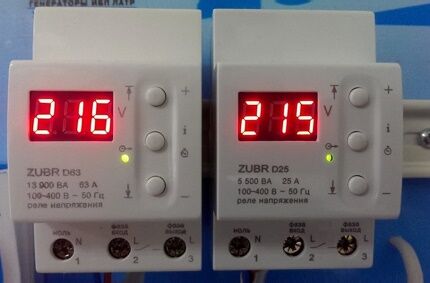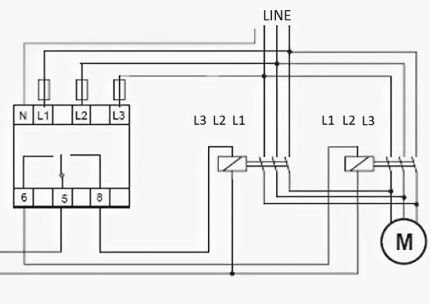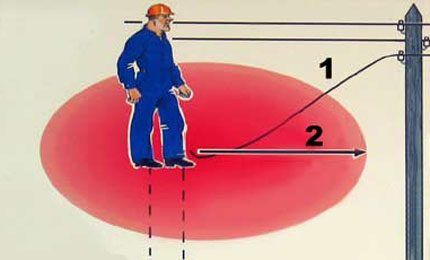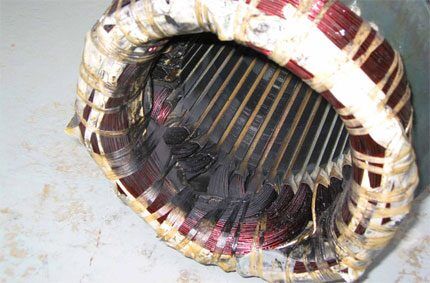Phase control relay: principle of operation, types, markings + how to adjust and connect
The result of the technical situation, when the stator windings of the motor consume current more than the set parametric values, is excess heat. This factor causes a decrease in the quality of motor insulation. The equipment fails.
The response time of thermal overload relays is usually insufficient to provide effective protection against excess heat generated by high current. In such cases, only the phase control relay is seen as an effective protective device.
The content of the article:
General information about the device
The functionality of electrical devices of this type is much broader than just protection against overheating and short circuit.
In practice, the effective properties of overloaded phase selection relays have been noted, which ultimately provide comprehensive protection.

Thanks to phase tracking devices, the following benefits are achieved:
- increasing engine service life;
- reduction of costly repairs or engine replacement;
- reduction of downtime due to engine defects;
- reducing the risk of electric shock.
In addition, the device provides reliable protection against fire and short-circuit of the motor windings.
Typical design of protective relays
There are two main types of protective devices designed for use in three-phase systems - current sensing relays and voltage sensing relays.
Pros of using devices
The advantageous side of current protective relays in relation to voltage control relay obvious. This type of device operates regardless of the influence of EMF (electromotive force), which invariably accompanies a phase failure when the motor is overloaded.
In addition, devices operating on the principle of current measurement are able to detect abnormal motor behavior. Monitoring is possible either on the line side of the branch circuit or on the load side where the relay is installed.

Process monitoring devices based on the principle of voltage measurement are limited to detecting abnormal operating conditions only on the side of the line where the device is connected.
However, voltage-sensitive devices also have an important advantage. It lies in the ability of devices of this type to detect an abnormal condition that does not depend on the condition of the engine.
For example, a type of relay that is sensitive to current changes detects abnormal phase conditions only directly during engine operation. But the voltage measuring device provides protection immediately before starting the motor.
Also among the advantages of voltage measuring devices are simple installation and lower price.
This type of protection devices:
- does not require additional current transformers;
- applies regardless of system load.
And for it to work you just need to connect the voltage.
Phase failure detection
A phase failure is quite possible due to the failure of a fuse in one of the parts of the power distribution system. A mechanical failure of switching equipment or a break in one of the power lines also provokes a phase failure.

A three-phase motor running on one phase draws the required current from the remaining two lines. An attempt to start it in single-phase mode will lead to blocking of the rotor and the engine will not start.
The response time per unit of thermal overload may be too long to provide effective protection against excessive heat. If protection against it is not set thermal relay, then when a failure occurs due to overheating in the motor windings.
Protecting a three-phase motor from a phase failure factor is difficult due to the fact that an underloaded three-phase motor operating on one phase out of three generates a voltage called regenerated (back EMF).
It is formed inside the broken winding and is almost equal to the value of the lost input voltage. Therefore, voltage measurement relays that monitor only its magnitude in such situations do not provide complete protection against phase failure.

A higher degree of protection can be obtained by using a device that can detect the phase angle shift that typically accompanies a phase failure. Under normal conditions, three-phase voltage is 120 degrees in phase with each other. A failure will result in an angle shift from the normal 120 degrees.
Detection of phase reversal
Phase reversal can occur:
- Maintenance is carried out on motor equipment.
- Changes have been made to the electricity distribution system.
- When power is restored, the phase sequence is different from what it was before the power outage.
Phase reversal detection is important if a motor running in reverse could damage the driven mechanism or, worse, cause physical harm to operating personnel.

Rules for the operation of electrical networks require the use of protection against possible phase reversal on all equipment, including vehicles for transporting personnel (escalators, elevators, etc.).
Voltage imbalance detection
Imbalance usually occurs when the incoming line voltages supplied by the utility company are at different levels. Imbalance can occur when single-phase loads of lighting, electrical outlets, single-phase motors and other equipment are connected on separate phases and are not distributed in a balanced manner.
In any of these cases, a current imbalance occurs in the system, which reduces efficiency and shortens the life of the motor.
An unbalanced or insufficient voltage applied to a three-phase motor results in a current imbalance in the stator windings equal to multiples of the phase-to-phase voltage imbalance. This moment, in turn, is accompanied by an increase in heating, which is the main reason for the rapid destruction of motor insulation.

Based on all the described technical and technological factors, the importance of using this type of relay becomes obvious, not only for the operation of electric motors, but also for generators, transformers and other electrical equipment.
How to connect the control device?
The designs of relays that monitor phases, despite the wide range of products available, have a unified housing.
Structural elements of the product
Terminal blocks for connecting electrical conductors are usually located on the front part of the housing, which is convenient for installation work.
The device itself is made for installation on a DIN rail or simply on a flat surface. The terminal block interface is usually a standard reliable clamp designed for fastening copper (aluminum) conductors with a cross-section of up to 2.5 mm2.
The front panel of the device contains a control knob/controls, as well as a light control indication. The latter shows the presence/absence of supply voltage, as well as the state of the actuator.

The three-phase voltage connection is made at the operating terminals of the device, indicated by the corresponding technical symbols (L1, L2, L3). The installation of a neutral conductor on such devices is usually not provided, but this point is specifically determined by the design of the relay - the type of model.
To connect to the control circuits, a second interface group is used, usually consisting of at least 6 operating terminals. One pair of the relay contact group switches the coil circuit of the magnetic starter, and through the second - the control circuit of the electrical equipment.
Everything is quite simple. However, each individual relay model may have its own connection features. Therefore, when using the device in practice, you should always be guided by the accompanying documentation.
Fixture Setup Steps
Again, depending on the design, the product design can be equipped with different circuit configuration and adjustment options. There are simple models that are designed to connect one or two potentiometers to the control panel. And there are devices with advanced customization elements.

Among such advanced tuning elements, block microswitches are often found, located directly on the printed circuit board under the device body or in a special opening niche.By installing each of them in one position or another, the required configuration is created.
Setting usually comes down to setting the nominal protection values by rotating potentiometers or placing microswitches. For example, to monitor the state of contacts, the voltage difference sensitivity level (ΔU) is usually set to 0.5 V.
If it is necessary to control the load supply lines, the voltage difference sensitivity regulator (ΔU) is adjusted to a boundary position where the transition point from the operating signal to the emergency signal is marked with a small tolerance towards the nominal value.
As a rule, all the nuances of setting up devices are clearly described in the accompanying documentation.
Phase control device marking
Classic devices are marked simply. A symbolic-numeric sequence is applied to the front or side panel of the case, or the designation is noted in the passport.

Thus, a Russian-made device for connection without a neutral wire is marked:
EL-13M-15 AC400V
where: EL-13M-15 is the name of the series, AC400V is the permissible AC voltage.
Samples of imported products have slightly different markings.
For example, the PAHA series relay is marked with the following abbreviation:
PAHA B400 A A 3 C
The decoding is something like this:
- PAHA is the name of the series.
- B400 – standard voltage 400 V or connected from a transformer.
- A – adjustment by potentiometers and microswitches.
- A (E) – type of housing for mounting on a DIN rail or in a special connector.
- 3 – case size 35 mm.
- C – end of the code marking.
On some models, one more value may be added before point 2. For example, “400-1” or “400-2”, and the sequence of the rest does not change.
This is how phase control devices equipped with an additional power interface for an external source are marked. In the first case, the supply voltage is 10-100 V, in the second it is 100-1000 V.
Will familiarize you with the principle of operation, design features and purpose of the load switch next article, which we highly recommend reading.
Conclusions and useful video on the topic
The video is dedicated to the description and review of a single product from the EKF company. However, almost all manufactured phase control devices operate on the same principle:
With all the variety of devices on the market, it is difficult to determine any labeling standard. If foreign manufacturers label according to one canon, then domestic ones - according to another. Nevertheless, it is always possible to refer to reference data if an accurate decoding of the characteristics is required.
Would you like to share your own experience in selecting and installing voltage relays designed for phase monitoring? Do you have useful information that will be useful to site visitors? Please write comments in the block below, post photographs on the topic, and ask questions.



